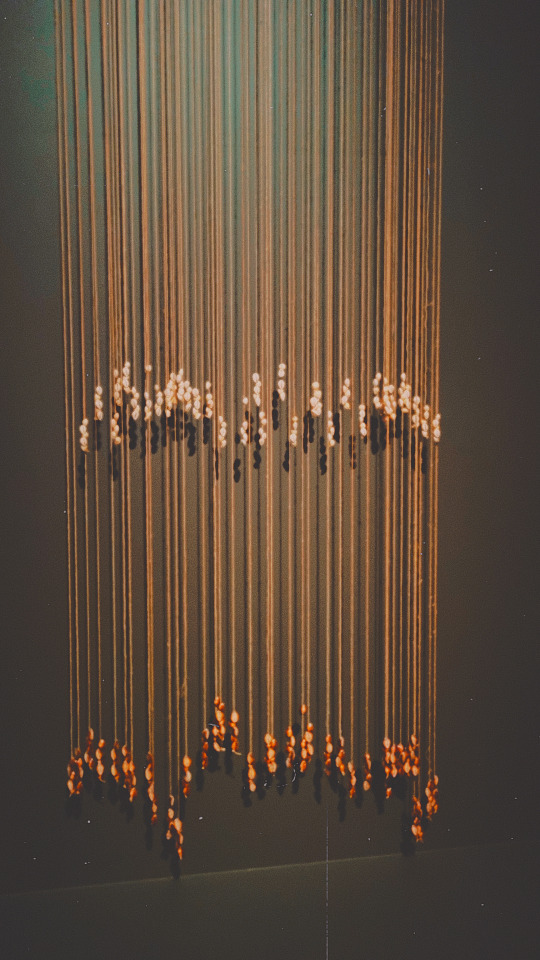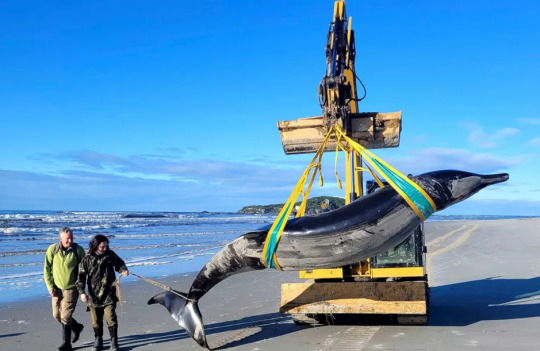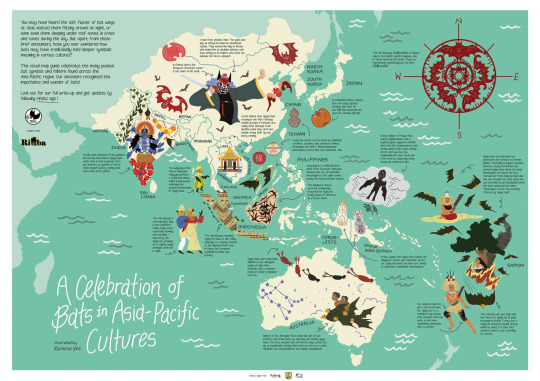#Asia Pacific
Explore tagged Tumblr posts
Text

The DeepSeek panic reveals an AI world ready to blow❗💥
The R1 chatbot has sent the tech world spinning – but this tells us less about China than it does about western neuroses
The arrival of DeepSeek R1, an AI language model built by the Chinese AI lab DeepSeek, has been nothing less than seismic. The system only launched last week, but already the app has shot to the top of download charts, sparked a $1tn (£800bn) sell-off of tech stocks, and elicited apocalyptic commentary in Silicon Valley. The simplest take on R1 is correct: it’s an AI system equal in capability to state-of-the-art US models that was built on a shoestring budget, thus demonstrating Chinese technological prowess. But the big lesson is perhaps not what DeepSeek R1 reveals about China, but about western neuroses surrounding AI.
For AI obsessives, the arrival of R1 was not a total shock. DeepSeek was founded in 2023 as a subsidiary of the Chinese hedge fund High-Flyer, which focuses on data-heavy financial analysis – a field that demands similar skills to top-end AI research. Its subsidiary lab quickly started producing innovative papers, and CEO Liang Wenfeng told interviewers last November that the work was motivated not by profit but “passion and curiosity”.
This approach has paid off, and last December the company launched DeepSeek-V3, a predecessor of R1 with the same appealing qualities of high performance and low cost. Like ChatGPT, V3 and R1 are large language models (LLMs): chatbots that can be put to a huge variety of uses, from copywriting to coding. Leading AI researcher Andrej Karpathy spotted the company’s potential last year, commenting on the launch of V3: “DeepSeek (Chinese AI co) making it look easy today with an open weights release of a frontier-grade LLM trained on a joke of a budget.” (That quoted budget was $6m – hardly pocket change, but orders of magnitude less than the $100m-plus needed to train OpenAI’s GPT-4 in 2023.)
R1’s impact has been far greater for a few different reasons.
First, it’s what’s known as a “chain of thought” model, which means that when you give it a query, it talks itself through the answer: a simple trick that hugely improves response quality. This has not only made R1 directly comparable to OpenAI’s o1 model (another chain of thought system whose performance R1 rivals) but boosted its ability to answer maths and coding queries – problems that AI experts value highly. Also, R1 is much more accessible. Not only is it free to use via the app (as opposed to the $20 a month you have to pay OpenAI to talk to o1) but it’s totally free for developers to download and implement into their businesses. All of this has meant that R1’s performance has been easier to appreciate, just as ChatGPT’s chat interface made existing AI smarts accessible for the first time in 2022.
Second, the method of R1’s creation undermines Silicon Valley’s current approach to AI. The dominant paradigm in the US is to scale up existing models by simply adding more data and more computing power to achieve greater performance. It’s this approach that has led to huge increases in energy demands for the sector and tied tech companies to politicians. The bill for developing AI is so huge that techies now want to leverage state financing and infrastructure, while politicians want to buy their loyalty and be seen supporting growing companies. (See, for example, Trump’s $500bn “Stargate” announcement earlier this month.) R1 overturns the accepted wisdom that scaling is the way forward. The system is thought to be 95% cheaper than OpenAI’s o1 and uses one tenth of the computing power of another comparable LLM, Meta’s Llama 3.1 model. To achieve equivalent performance at a fraction of the budget is what’s truly shocking about R1, and it’s this that has made its launch so impactful. It suggests that US companies are throwing money away and can be beaten by more nimble competitors.
But after these baseline observations, it gets tricky to say exactly what R1 “means” for AI. Some are arguing that R1’s launch shows we’re overvaluing companies like Nvidia, which makes the chips integral to the scaling paradigm. But it’s also possible the opposite is true: that R1 shows AI services will fall in price and demand will, therefore, increase (an economic effect known as Jevons paradox, which Microsoft CEO Satya Nadella helpfully shared a link to on Monday). Similarly, you might argue that R1’s launch shows the failure of US policy to limit Chinese tech development via export controls on chips. But, as AI policy researcher Lennart Heim has argued, export controls take time to work and affect not just AI training but deployment across the economy. So, even if export controls don’t stop the launches of flagships systems like R1, they might still help the US retain its technological lead (if that’s the outcome you want).
All of this is to say that the exact effects of R1’s launch are impossible to predict. There are too many complicating factors and too many unknowns to say what the future holds. However, that hasn’t stopped the tech world and markets reacting in a frenzy, with CEOs panicking, stock prices cratering, and analysts scrambling to revise predictions for the sector. And what this really shows is that the world of AI is febrile, unpredictable and overly reactive. This a dangerous combination, and if R1 doesn’t cause a destructive meltdown of this system, it’s likely that some future launch will.
Daily inspiration. Discover more photos at Just for Books…?
#just for books#DeepSeek#Opinion#Artificial intelligence (AI)#Computing#China#Asia Pacific#message from the editor
27 notes
·
View notes
Text





















Asia Pacific Triennial, QAGOMA
#desiblr#girlblogging#light academia#dark academia#romantic academia#this is a girlblog#gaslight gatekeep girlblog#brisbane#queensland#desi girl#modern art#contemporary art#artwork#art gallery#art galleries#surrealism#contemporary painting#asia pacific#art#indie#photography#my photos#photoshoot#90s aesthetic#aesthetic#aesthetic art#cityscape#city life#urban photography#urban
7 notes
·
View notes
Text
World's Rarest Whale Washes Up On New Zealand Beach
The body of a spade-toothed whale — a species so rare it has never been seen alive — appears to have washed up on a New Zealand beach, scientists say.
The remains of the obscure, five-metre (16.4 foot) long, beaked creature were found near a river mouth in southern Otago province on July 4, government researchers said.

It was identified by marine-mammal experts from New Zealand’s Department of Conservation and the national museum, Te Papa, as a male spade-toothed whale.
A DNA investigation has been launched to confirm its classification, the scientists said.
“Spade-toothed whales are one of the most poorly known large mammalian species of modern times,” said the conservation department’s coastal Otago operations manager, Gabe Davies.
“Since the 1800s, only six samples have ever been documented worldwide, and all but one of these was from New Zealand,” Davies said in a statement Monday.
“From a scientific and conservation point of view, this is huge.”
The find was fresh enough to offer the first opportunity for a spade-toothed whale to be dissected, the conservation department said.
The species is “so rare next to nothing is known about them”, it said.
The body of the whale has been placed in cold storage and genetic samples have been sent to the University of Auckland as curators of the New Zealand Cetacean Tissue Archive.
It may take several weeks or months for the DNA to be processed and a final identification confirmed.
“The rarity of the whale means conversations around what to do next will take more time because it is a conversation of international importance,” the conservation department said.
The species was first described in 1874 from just a lower jaw and two teeth collected from the Chatham Islands off the east coast of New Zealand.
That sample, along with skeletal remains of two other specimens found in New Zealand and Chile, enabled scientists to confirm a new species.
Marine scientist Vanessa Pirotta said researchers would study the whale’s stomach contents, genetics, and how this sample compared to previous ones.
This could shine light on the whales’ behaviour, their population and why they are so rare, Pirotta told AFP, describing the discovery as “like hitting the jackpot”.
Because so few specimens have been found and there have been no live sightings, little is known about the spade-toothed whale and it is classified as “data deficient” under New Zealand’s Threat Classification System.
The first intact specimen was from a mother and calf stranding in Bay of Plenty in 2010, the New Zealand conservation department said.
A further stranding in 2017 in Gisborne added one more specimen to the collection.
11 notes
·
View notes
Text
Singaporeans for Palestine 🇵🇸🇸🇬





#Singapore#Singaporean#SIngaporeans#se asia#asia pacific#palestine#israel#gaza#west bank#genocide#apartheid#end the occupation#israel is a terrorist state
9 notes
·
View notes
Text
Passenger plane crashes at South Korean airport, killing 120 | Gallery News
At least 120 people have been killed when a passenger plane caught fire after skidding off a runway and slamming into a concrete fence at a South Korean airport. Two crew members were rescued after the accident that occurred on Sunday at 9:03am local time (00:03 GMT). The Ministry of Land, Infrastructure and Transport said the plane – a 15-year-old Boeing 737-800 jet – was returning from Bangkok…
2 notes
·
View notes
Text
By Brian Berletic
A series of announcements by the U.S. reflects its large and still growing military presence across Asia-Pacific, particularly in East and Southeast Asia. Together, they reflect a continued and increasingly desperate desire by Washington to encircle and contain China.
13 notes
·
View notes
Text
Thailand to allow same-sex couples to marry in January | LGBTQ News
Activists hail ‘monumental step’ as Thai king signs the country’s marriage-equality bill into law. Thailand’s king has signed a landmark marriage equality bill into law, making the kingdom the first country in Southeast Asia to recognise same-sex marriages. King Maha Vajiralongkorn endorsed the new law on Tuesday, according to the Royal Gazette. The legislation is set to take effect in 120 days,…
1 note
·
View note
Text

🇺🇲 BIDEN REASSURES PACIFIC ISLANDS HE WILL ACT ON CLIMATE CHANGE: OFFERS $200 MILLION
At this year's 18-member Pacific Islands Forum, US President Joe Biden told member nations he "hears" their warnings about the impacts of Climate Change and is committed to assisting the Pacific bloc meet the challenge.
Biden told the Forum his administration was requesting $200 Million in new assistance from Congress for the region, including financing to prepare for the impacts of Climate change, natural hazards and improve infrastructure.
The Biden Administration has made the Indo-Pacific island nations the focus of its Foreign Policy in the region, using the Pacific island nations to position a web of US Military bases around China with the intention of containing and controlling growing Chinese dominance in both the economic and military arenas.
#asia pacific#indo pacific#geopolitics#geopolitics news#geopolitical news#global news#world news#international affairs#international news#international politics#socialism#communism#marxism leninism#socialist politics#socialist news#socialist worker#socialist#communist#marxism#marxist leninist#politics#news#worker solidarity#workersolidarity#WorkerSolidarityNews#biden administration#us imperialism#china#western imperialism#imperialism
7 notes
·
View notes
Text

What’s that? You like history? You like the French? You think pacific exploration is a topic for further study? Wow, do we have the book for you!
The Fateful Voyage of the St Jean Baptiste by celebrated French-Kiwi historian Professor John Dunmore is a classic, now available in English as an ebook for the first time. Intrigued? Go here to check it out and get it (or one of our other fabulous eBooks) half price for a limited time, with coupon code TumblingLikeThat.
#books & libraries#bookstagram#bookshelf#books and reading#bookish#bookblr#book review#books#booklr#bookworm#publishing#authors#french#french history#pacific ocean#asia pacific#explorer#explorers#pacific exploration#history#historic#historical#literary#literature#literacy#literati#history books#history buffs#history blog#booksbooksbooks
7 notes
·
View notes
Text

Bat Week 2020: A Celebration of Bats in Asia-Pacific Cultures Art by Reimena Yee.
(Bigger image from here for more readable text. The background colouring is a little too bright though)
Text on the map under the cut.
You may have heard the soft flutter of bat wings at dusk, noticed them flitting around at night, or even seen them sleeping under roof eaves, in trees and caves during the day. But apart from these brief encounters, have you ever wondered how bats may have traditionally held deeper symbolic meaning in various cultures?
This visual map guide celebrates the many positive bat symbols and folklore found across the Asia-Pacific region. Our ancestors recognised the importance and wonder of bats!
Look out for our full write-up and get updates by following rimba.ngo!
Project Pteropus, a project under RIMBA.
India
In India, Hindu devotees of the goddess Kali worship and protect flying foxes which roost in sacred groves. Bats also feature as symbols of love in Tamil Sangam poetry, dating back more than 2000 years!
China / Taiwan / Chinese culture
A tale from ancient China: The gods took pity on Zhong Kui when he committed suicide. They named him King of Ghosts and tasked him to discipline demons, with bats acting as his helpers who scout out demons for him to vanquish.
In Chinese opera, the Zhong Kui character wears a bat motif on his mask.
The Five Blessings (五福 wŭfú) in Chinese culture are health, wealth, longevity, love of virtue and peaceful death. They are represented symbolically by five bats (五蝠 wŭfú).
In traditional Chinese culture, bats are lucky symbols because the word for bat (蝠 fú) sounds like the word for blessing (福 fú).
Lucky bat motifs can be found on traditional ceramics, jewellery and textiles in Chinese, Peranakan and other Chinese-influenced communities across East and Southeast Asia.
Vietnam
Locals believe that flying foxes roosting in the Wat Mahatup temple grounds in Vietnam are calling forth blessings from Buddha when they circle the temple during their fly-out every evening.
Malaysia / Indonesia
The indigenous Mah Meri in Peninsular Malaysia perform a traditional dance called 'kuang kuwait', mimicking the graceful movements of flying foxes.
The 'siku keluang' a choreography step in the traditional Malay Zapin dance represents humility and restraint - inspired by the flying fox wrapping up its mighty wings' strength when not in flight.
The 'siku keluang', meaning flying fox elbow in the Malay language, is a zigzag, chevron or herringbone motif used in Malay and Javanese traditional textiles and pottery.
According to a traditional Iban belief from Sarawak, Malaysian Borneo, bats act as shamanic messengers to the upper-world during the Gawai harvest festival.
The indigenous Iban in Sarawak traditionally featured the flying fox, locally known as 'semawa', as a tattoo motif.
Papua New Guinea / Western New Guinea
In Bowi folklore of Papua New Guinea, Kinjinmbunduo was a mythical giant flying fox female spirit who left thunderstorms and strong winds in her wake, striking terror and awe but also replenishing the river basin with fruit trees by dispersing seeds during her nocturnal visits.
In New Guinea and Papua New Guinea, the indigenous Asmat and Trobriand carved out flying fox motifs on their war shields to represent triumphant head-hunters.
Samoa
Flying foxes are perceived as protectors and saviours in Samoan folklore. According to legend, Samoan Princess Leutogi befriended and warned flying foxes about the king's hunting plans. In return, the bats rescued her from being burned alive and also brought her food when she was stranded on an inhospitable island. She later bestowed the name "Tonumaipe'a" on her son, meaning "rescued by flying foxes".
For Samoan men, the pe'a—the local name for flying fox is a coming-of-age tattoo that extends From the waist to the knee, symbolising protection over a warrior.
The Samoan war god Sepo took the form of a flying fox to guide his people in battle. If they saw a flying fox ahead, it meant victory would be theirs; if it flew back towards them it was a warning to retreat.
Australia
Flying foxes were important animals to the Aboriginal people of Cape York, Australia, and a common feature in their prehistoric rock art.
Folklore of the Aboriginal Wik in Australia tells of two brothers who broke taboo by spearing and cooking flying foxes. The bats escaped and carried the boys up into the sky as punishment, leaving them there to serve as a grim reminder now immortalised in the Gemini constellation!
Link to open access article of the research:
#bat#bats#asia pacific#south east asia#asia#folklore#culture#cultures of the world#asian culture#chinese culture#tradition#indigenous#indigenous culture#bat week#chiroptera#mammal#animal#bats of asia#india#china#taiwan#vietnam#malaysia#indonesia#papua new guinea#new guinea#samoa#australia#partially described#bat info
3 notes
·
View notes
Text
( https://www.amazon.com.au/stores/Winai-Siabthaisong/author/B0749QF2MD?ref=ap_rdr&store_ref=ap_rdr&isDramIntegrated=true&shoppingPortalEnabled=true )
#Australia
( https://www.amazon.com.au/dp/B0CFZFDW15?_encoding=UTF8&psc=1&ref_=cm_sw_r_cp_ud_dp_44N9JZFAF44NTXXJX2G2 )
( https://amzn.asia/d/7fBjw0m )
( https://www.amazon.com.au/dp/B0CJ7CT13M?_encoding=UTF8&psc=1&ref_=cm_sw_r_cp_ud_dp_Z7D82E02YE2CSQQ3RWAR )
(https://amzn.asia/d/d1SIMtM)
( https://www.amazon.com.au/dp/B0CJGYNZ1G?ref_=cm_sw_r_cp_ud_dp_HQ84C5H040NZ6ZTZK29C )
( https://amzn.asia/d/f7D44TU )
2 notes
·
View notes
Photo

Indigenous tattooist becomes Vogue's oldest ever cover star at 106 Apo Whang-Od appears on front of Philippine edition and is credited with keeping batok form of art alive An Indigenous tattooist in the Philippines credited with helping to keep alive a form of the art known as batok has become the oldest Vogue cover star after appearing in the Philippine edition of the magazine at the age of 106.Apo Whang-Od, who is from Buscalan, a remote, mountainous village in the Kalinga province of the northern Philippines, began tattooing at 16. Once described as the last remaining mambabatok, or traditional Kalinga tattooist, she has since inspired a new generation to learn batok, said Vogue. Batok involves tapping the tattoo into the skin by hand, using a thorn, which is dipped in soot and natural dye, and is attached to a bamboo stick. Continue reading... https://www.theguardian.com/world/2023/apr/03/indigenous-tattooist-apo-whang-od-vogue-oldest-cover-star-106-philippines
#Philippines#Indigenous peoples#Tattoos#Vogue#Art#Asia Pacific#World news#Culture#Heritage#Magazines#Fashion#Rebecca Ratcliffe in Bangkok#Culture | The Guardian
7 notes
·
View notes
Link
5 notes
·
View notes
Link
on the one hand this is great. diversity and representation matters.
on the other hand its still the center left career politicians of the labour party who are fine with the ever crumbling status quo as long as they remain in power
6 notes
·
View notes
Text
Vietnam stands with Palestine 🇵🇸🇻🇳





#Palestine#Vietnam#Hanoi#hanoi vietnam#southeast asia#asia pacific#Vietnamese#palestina libre#Palestina#Israel#Socialism
9 notes
·
View notes
Photo

As the darkness slowly gave way to the light of day, a new kind of warfare had emerged in the shadows of a forgotten land. The Chinese had crafted a new means of secretly waging war using a combination of cyber and biological weapons that were beyond the comprehension of the surrounding nations. It was a new kind of fear that left those living in its path in a state of tension. The warfare was so invisible, so hidden, yet so powerful, that no one knew who would be the next target of this unprecedented form of warfare.
#Asia Pacific#Cyber#Land#Technology#biodefense#China#Chinese People’s Liberation Army#cyber attacks#cybersecurity#technology#fault#covert warfare#biological weapons#cyberattacks#bioterrorism
2 notes
·
View notes